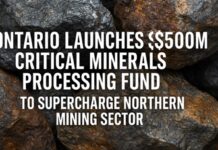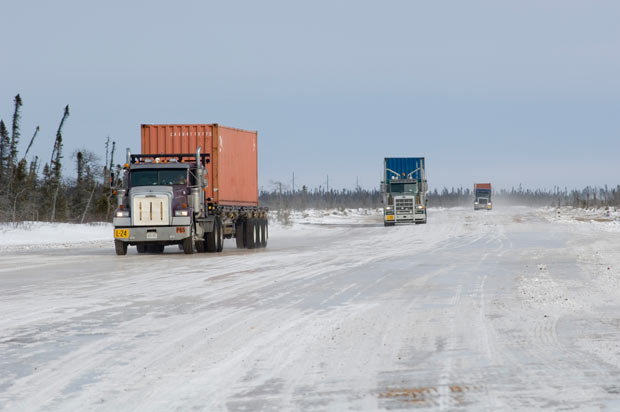 THUNDER BAY – Much of the excitement in the media over mining discoveries in Northwestern Ontario have all eyes on the Ring of Fire and the potential of chromite discoveries. However the region has other mineral wealth. One of the minerals is graphite. Zenyatta Ventures continues to develop a rare ‘vein-type’ graphite deposit it discovered in 2011 in northeastern Ontario, Canada.
THUNDER BAY – Much of the excitement in the media over mining discoveries in Northwestern Ontario have all eyes on the Ring of Fire and the potential of chromite discoveries. However the region has other mineral wealth. One of the minerals is graphite. Zenyatta Ventures continues to develop a rare ‘vein-type’ graphite deposit it discovered in 2011 in northeastern Ontario, Canada.
This discovery, according to Zenyatta “Is the largest and only known ‘vein type’ graphite deposit under development in the world. Mineralogical work shows the graphite material to be very simple and contains negligible amounts of undesirable material. The Albany deposit is located 30km north of the Trans-Canada Highway, power line and natural gas pipeline near the communities of Constance Lake First Nation and Hearst”.
“A rail line is located 70km away and an all-weather road approximately 4-5km from the graphite deposit. The deposit is near surface, underneath glacial till overburden and a thin veneer of Paleozoic sedimentary cover rocks,” states the company in a media release.
Today, Zenyatta Ventures Ltd. have announced an addition to its management team by hiring Peter C. Wood, P. Eng, P. Geo. as Vice President Exploration. The company says “Mr. Wood brings extensive experience with over 25 years in mineral exploration and development since obtaining his M.Sc. (Geology) from University of Toronto in 1987. He will have the responsibility of overseeing the design and management of exploration programs, including the upcoming drill programs at the Albany graphite deposit. Recently Mr. Wood has consulted for junior mining companies on successful exploration programs for nickel, PGM, copper-zinc-silver (VMS) and gold in Ontario and Manitoba”.
Aubrey Eveleigh, President and CEO stated, “The addition of a seasoned geologist such as Peter Wood is very important for the implementation of the Company’s growth strategy. He brings extensive experience and leadership to the Zenyatta technical team. In 2013, Mr. Wood will focus on defining a NI 43-101 resource at the Albany graphite deposit and preparing for a pre-feasibility study.”
To complement its exploration and development work, Zenyatta will be supporting a Lakehead University M.Sc. research program to be supervised by Dr. Andrew Conly, Ph.D. of Lakehead University Mineralogy and Experimental Laboratory (“LUMINX”) in Thunder Bay, Ontario. The research will be using various global publications on ‘vein-type’ (or hydrothermal) graphite deposits to serve as a basis to provide a comprehensive assessment of the Albany graphite deposit. The research will focus on the overall genesis of the Albany deposit. Specific questions that will be addressed: a) age of mineralization b) source and chemical nature of the graphite-forming fluids and c) unique mineralogical and geochemical characteristics of the hydrothermal graphite.
Apart from providing new insights into ‘vein-type’ graphite deposits, the research will also aid Zenyatta’s exploration and mineral beneficiation programs. With respect to the former, increasing our understanding of the genesis of the deposit will provide insights regarding its relationship to structural and magmatic events. In terms of mineral beneficiation, the research will complement on-going work by SGS Canada Inc. (Minerals Services Division of Lakefield, ON).
Zenyatta now has 42,385,862 common shares issued and outstanding with a total of 57,475,862 shares on a fully diluted basis.
Are Graphite and Graphene going to be a ‘second’ Ring of Fire?
So what is making graphite so hot in the mining and scientific communities? Part of it is the developing technologies and potential. High value graphite flake is used to make the anodes for lithium-ion batteries. That has applications for electric cars, computer batteries, and power storage.
It is however Graphene which is generating some real buzz. Graphene was first discovered in 2004. In 2010 two scientists from the UK won the Nobel Peace Prize for their research into the uses of this new mineral.
Interviewed on graphite in The Gold Report, Simon Moores states, “It’s conductive; it’s a lubricant; it’s resistant to high temperatures and it’s a strong mineral. This means it doesn’t have just one major market; it has an abundance of markets and uses. It’s key to existing technologies that have been around for 100 years as well as new technologies, like lithium-ion batteries.
“But despite what many think, it’s not a niche industry. Rare earths and lithium are niche industries. Each year, 1.1 million tons (Mt) of graphite is produced. It’s bigger by volume than molybdenum, vanadium, cobalt, tungsten, rare earths and lithium combined. Graphite miners operate all around the world in Canada, Brazil, Europe, India and, of course, China, which accounts for 80% of production”.







